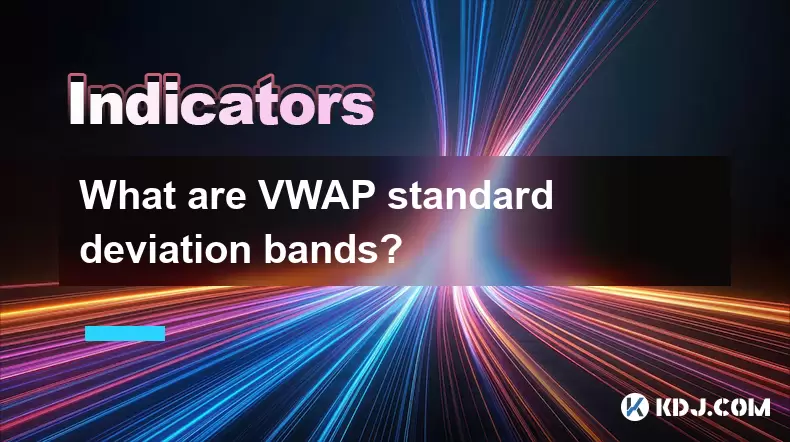-
 Bitcoin
Bitcoin $117,892.7399
-0.88% -
 Ethereum
Ethereum $3,436.0662
8.30% -
 XRP
XRP $3.2599
10.11% -
 Tether USDt
Tether USDt $1.0002
0.01% -
 BNB
BNB $717.3007
3.34% -
 Solana
Solana $176.4021
5.42% -
 USDC
USDC $0.9997
-0.02% -
 Dogecoin
Dogecoin $0.2159
6.54% -
 TRON
TRON $0.3116
3.64% -
 Cardano
Cardano $0.8084
7.68% -
 Hyperliquid
Hyperliquid $46.2989
-3.74% -
 Stellar
Stellar $0.4732
1.54% -
 Sui
Sui $4.0022
-0.66% -
 Chainlink
Chainlink $17.1611
3.71% -
 Hedera
Hedera $0.2461
3.30% -
 Bitcoin Cash
Bitcoin Cash $496.6743
-0.74% -
 Avalanche
Avalanche $22.9305
3.52% -
 Shiba Inu
Shiba Inu $0.0...01446
3.31% -
 UNUS SED LEO
UNUS SED LEO $8.8124
-0.07% -
 Toncoin
Toncoin $3.2407
4.13% -
 Litecoin
Litecoin $100.2127
2.57% -
 Polkadot
Polkadot $4.2312
2.34% -
 Monero
Monero $340.1485
1.97% -
 Pepe
Pepe $0.0...01370
3.49% -
 Uniswap
Uniswap $8.9383
-2.38% -
 Bitget Token
Bitget Token $4.7134
0.59% -
 Dai
Dai $0.9998
-0.04% -
 Ethena USDe
Ethena USDe $1.0003
-0.03% -
 Aave
Aave $323.6890
-1.90% -
 Bittensor
Bittensor $429.1624
-3.39%
What are VWAP standard deviation bands?
VWAP standard deviation bands help crypto traders assess volatility, identify trends, and make informed decisions by combining price, volume, and statistical deviations.
Jul 12, 2025 at 11:49 am

Understanding the Concept of VWAP
VWAP, or Volume Weighted Average Price, is a trading indicator used in financial markets, including cryptocurrency. It calculates the average price at which an asset trades throughout the day, weighted by volume. This makes it more accurate than simple moving averages because it accounts for both price and trade volume.
In the context of cryptocurrencies, where volatility is high and price movements can be erratic, VWAP serves as a benchmark for traders to evaluate their performance against the average market price. Institutional traders often use VWAP to execute large orders without significantly impacting the market price.
What Are Standard Deviation Bands?
Standard deviation bands are statistical tools that measure how far prices deviate from a central value, typically a moving average. These bands are plotted above and below the central line—usually the VWAP—and indicate potential overbought or oversold conditions.
In crypto trading, standard deviation bands around the VWAP help identify volatility extremes. When the price touches or moves outside these bands, it suggests a strong directional move or a possible reversal. Traders can adjust the number of standard deviations to suit different market conditions and timeframes.
Combining VWAP with Standard Deviation: The Full Picture
When VWAP is combined with standard deviation bands, it becomes a powerful analytical tool. This combination creates a visual representation of how price interacts with its volume-weighted average, while also showing levels of volatility expansion or contraction.
For example, if Bitcoin’s price rises sharply and reaches the upper standard deviation band, it could signal an overextended rally. Conversely, if Ethereum drops to the lower band, it might suggest a temporary bottom forming. These observations are especially useful during periods of heightened volatility in the crypto market.
How to Calculate VWAP Standard Deviation Bands
To calculate VWAP standard deviation bands, you must first compute the VWAP itself. Here's a breakdown:
- Calculate the typical price for each period: (High + Low + Close) / 3
- Multiply this typical price by the volume for that period to get the price-volume value
- Sum up all the price-volume values and divide by the total volume to get VWAP
Once VWAP is calculated, determine the standard deviation of the typical price over the same period. Then:
- Add one standard deviation to the VWAP to get the upper band
- Subtract one standard deviation from the VWAP to get the lower band
Some platforms automate this process, but understanding the underlying math allows traders to customize parameters like lookback periods and deviation multipliers.
Using VWAP Standard Deviation Bands in Crypto Trading Strategies
Traders apply VWAP standard deviation bands in several ways:
- Mean Reversion Strategy: If the price moves beyond the upper or lower band, some traders expect a pullback toward VWAP and enter counter-trend positions.
- Trend Following Strategy: When the price remains consistently near the upper band, it may signal a strong uptrend, encouraging long entries on dips to VWAP.
- Volatility Breakout Strategy: A sudden breakout beyond the bands, especially on increased volume, can indicate the start of a new trend.
It’s crucial to combine these bands with other indicators like RSI or MACD to filter false signals and confirm entry points. In fast-moving crypto markets, using multiple filters enhances reliability.
Customizing Parameters for Different Cryptocurrencies
Not all cryptocurrencies behave the same way. For instance, Bitcoin tends to have smoother price action compared to altcoins like Dogecoin or Shiba Inu, which can experience extreme spikes and crashes.
Adjusting the lookback period and standard deviation multiplier helps tailor VWAP bands to specific assets:
- Shorter periods make the bands more sensitive to recent price changes
- Higher multipliers widen the bands, reducing false breakouts
- Lower multipliers create tighter bands, ideal for scalping strategies
Experimenting with settings on historical charts can reveal optimal configurations for different coins and timeframes.
Frequently Asked Questions
Q1: Can VWAP standard deviation bands be applied to intraday trading in crypto?
Yes, they are particularly effective for intraday trading due to their responsiveness to volume and volatility. Traders use them on 5-minute, 15-minute, or hourly charts to capture short-term trends and reversals.
Q2: Do VWAP standard deviation bands work well in ranging markets?
They can still provide valuable insights in ranging markets. Prices bouncing between the bands may indicate consolidation, and repeated tests of the bands can highlight support and resistance zones.
Q3: How do VWAP standard deviation bands differ from Bollinger Bands?
While both use standard deviation, Bollinger Bands are based on simple moving averages, whereas VWAP bands incorporate volume into their calculation. This makes VWAP bands more representative of actual buying and selling pressure in real-time.
Q4: Is it possible to use VWAP standard deviation bands across multiple exchanges?
Yes, but it’s important to note that each exchange may have different volume data. To ensure accuracy, traders should use VWAP bands on platforms that aggregate reliable volume information or focus on one trusted exchange for consistency.
Disclaimer:info@kdj.com
The information provided is not trading advice. kdj.com does not assume any responsibility for any investments made based on the information provided in this article. Cryptocurrencies are highly volatile and it is highly recommended that you invest with caution after thorough research!
If you believe that the content used on this website infringes your copyright, please contact us immediately (info@kdj.com) and we will delete it promptly.
- C2 Blockchain, DOG Coins, and Acquisition: A Meme-Native Bitcoin Asset
- 2025-07-17 20:30:12
- Ethereum, Pepe, Crypto: Navigating the Wild West of Digital Assets
- 2025-07-17 20:30:12
- PUMP Presale Mania: CEX Transfers and the Token's Wild Ride
- 2025-07-17 20:50:11
- Hilbert Group & Tokenisation: Seed Round Success Signals DeFi's Institutional Future
- 2025-07-17 20:50:12
- Trump, Meme Coins, and Tokens: A Wild Ride in Crypto
- 2025-07-17 18:50:12
- Ripple's EU Expansion: RLUSD Takes Center Stage, XRP's Role Defined
- 2025-07-17 18:30:12
Related knowledge

Advanced RSI strategies for crypto
Jul 13,2025 at 11:01am
Understanding the Basics of RSI in Cryptocurrency TradingThe Relative Strength Index (RSI) is a momentum oscillator used to measure the speed and chan...

Crypto RSI for day trading
Jul 12,2025 at 11:14am
Understanding RSI in the Context of Cryptocurrency TradingThe Relative Strength Index (RSI) is a momentum oscillator used to measure the speed and cha...

Crypto RSI for scalping
Jul 12,2025 at 11:00pm
Understanding RSI in the Context of Crypto TradingThe Relative Strength Index (RSI) is a momentum oscillator widely used by traders to measure the spe...

What does an RSI of 30 mean in crypto
Jul 15,2025 at 07:07pm
Understanding RSI in Cryptocurrency TradingRelative Strength Index (RSI) is a momentum oscillator widely used in cryptocurrency trading to measure the...

What does an RSI of 70 mean in crypto
Jul 13,2025 at 06:07pm
Understanding the RSI Indicator in Cryptocurrency TradingThe Relative Strength Index (RSI) is a widely used technical analysis tool that helps traders...

Does RSI work in a bear market for crypto
Jul 16,2025 at 01:36pm
Understanding RSI in Cryptocurrency TradingThe Relative Strength Index (RSI) is a momentum oscillator used by traders to measure the speed and change ...

Advanced RSI strategies for crypto
Jul 13,2025 at 11:01am
Understanding the Basics of RSI in Cryptocurrency TradingThe Relative Strength Index (RSI) is a momentum oscillator used to measure the speed and chan...

Crypto RSI for day trading
Jul 12,2025 at 11:14am
Understanding RSI in the Context of Cryptocurrency TradingThe Relative Strength Index (RSI) is a momentum oscillator used to measure the speed and cha...

Crypto RSI for scalping
Jul 12,2025 at 11:00pm
Understanding RSI in the Context of Crypto TradingThe Relative Strength Index (RSI) is a momentum oscillator widely used by traders to measure the spe...

What does an RSI of 30 mean in crypto
Jul 15,2025 at 07:07pm
Understanding RSI in Cryptocurrency TradingRelative Strength Index (RSI) is a momentum oscillator widely used in cryptocurrency trading to measure the...

What does an RSI of 70 mean in crypto
Jul 13,2025 at 06:07pm
Understanding the RSI Indicator in Cryptocurrency TradingThe Relative Strength Index (RSI) is a widely used technical analysis tool that helps traders...

Does RSI work in a bear market for crypto
Jul 16,2025 at 01:36pm
Understanding RSI in Cryptocurrency TradingThe Relative Strength Index (RSI) is a momentum oscillator used by traders to measure the speed and change ...
See all articles

























































































